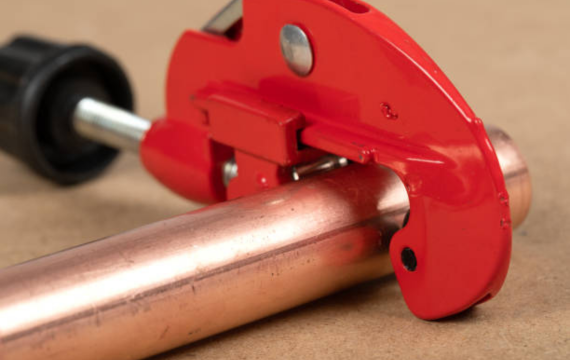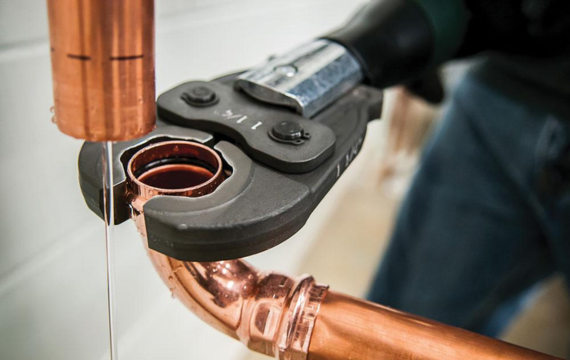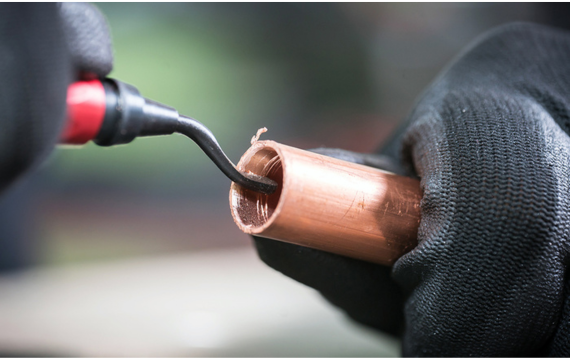What is a Copper Pipe?
A cylindrical conduit known for its adaptability and usefulness in a range of plumbing applications is the copper pipe. Copper pipes have long been preferred as a metallic plumbing fixture due to their exceptional heat conductivity, dependability, and durability. Copper pipes are an essential part of plumbing systems and are used in residential, commercial, and industrial settings as conduits for the transportation of fluids such as water and gases. Even at high temperatures and pressures, their cylindrical shape preserves structural integrity while enabling effective fluid flow.
Types of Copper Pipe

A single piece of copper is used to make seamless copper pipes; there are no joints or seams along the entire length of the pipe.

To create a continuous pipe, copper sheets or strips are joined together using welding techniques to create welded copper pipes.

To reduce their diameter and obtain the appropriate dimensions, solid copper billets are drawn through a series of dies to create drawn copper pipes.

The heat treatment procedure known as annealing is applied to copper pipes to increase their ductility and lessen internal stresses.
Fabrication Process


A. Material Selection
- Selecting the right type and grade of copper for a given application requires taking into account several variables, including temperature, pressure, corrosion resistance, and financial constraints.
- Types M, L, and K are common copper grades; they differ in wall thickness and strength.
- To meet the design requirements, factors like copper pipe’s diameter, wall thickness, and length are also taken into account when choosing the material.
B. Cutting and Shaping
- Cutting Techniques
i. Sawing: Sawing is a common technique for cutting copper pipes using hand saws or power saws equipped with fine-toothed blades. It allows for straight and precise cuts but may leave burrs that require deburring.
ii. Cutting Wheel: By turning around the pipe and gradually applying pressure to score and sever the copper, cutting wheels or pipe cutters produce a clean, smooth cut.
- Shaping Techniques
i. Bending: Copper pipes can be shaped with bending tools, like pipe benders or mandrels, to fit particular layouts and designs without kinking or deforming.
ii. Flaring: Copper pipes can have flared ends created for connecting to fittings or other pipes using flare tools. The instrument enlarges the pipe end into a flared shape, which makes connections more secure.
C. Joining Methods
- Soldering: In the process of soldering, copper pipes, and fittings are heated, and then a solder alloy with a lower melting point is applied. The solder alloy flows into the joint and, when cooled, forms a strong bond.
- Brazing: While brazing and soldering are similar processes, brazing uses higher temperatures and an alloy made of copper, silver, and phosphorus to produce a stronger joint that can withstand high pressure.
- Welding: By melting the base metal and adding a filler material to create a strong bond, welding joins copper pipes. There are two types of welding: gas metal arc welding (GMAW) and gas tungsten arc welding (GTAW).
D. SurfaceTreatment and Cleaning
- Deburring: To guarantee smooth flow and guard against damage to fittings during assembly, burrs, and sharp edges are removed from the cut ends of copper pipes using deburring tools after they have been cut.
- Cleaning Techniques:
i. Chemical cleaning: before soldering or brazing copper pipes, chemical cleaning solutions are used to remove dirt, grease, and other contaminants to ensure proper adhesion and joint strength.
ii. Mechanical cleaning: The copper pipe surface can also be cleaned mechanically with abrasive pads or wire brushes.
- Surface finishing: The surface of copper pipes and fittings is smoothed using surface finishing techniques like polishing, which improves their appearance and lowers friction for better flow.
Tools and Equipment

- Pipe Cutter: A pipe cutter is a portable instrument made especially for precisely and neatly cutting copper pipes. To create a clean, accurate cut, it usually consists of a ratcheting mechanism and a cutting wheel that applies pressure uniformly around the pipe.
- Hacksaw: When a pipe cutter is not available, a hacksaw is a manual cutting tool with a finely-toothed blade that is used to cut copper pipes. To guarantee straight cuts and reduce burrs, steady hand control is necessary.

- Bending tool: Copper pipes can be bent to fit particular layouts and designs using bending tools like pipe benders or mandrels without kinking or harming the pipe’s structural integrity. To accommodate different pipe diameters and bending angles they are available in a variety of sizes and designs.
- Flaring Tool: Copper pipes that need to be connected to fittings or other pipes can have their ends flared by using a flaring tool. A clamp and a cone-shaped mandrel that expands the pipe end to create a flared shape are the standard components of flaring tools.

- Soldering Iron: During the soldering process, heat is applied to the joint between copper pipes and fittings using a handheld soldering iron. Raising the temperature of the solder and flux to their melting point facilitates their flow into the joint and forges a strong bond.
- Brazing Torch: Copper pipes are brazed using a brazing torch, sometimes referred to as a brazing gun or torch kit. The brazing alloy is melted using a high-temperature flame and then flows into the joint between the pipes, forming a robust and leak-proof connection.

- Deburring tool: To guarantee smooth flow and guard against damage to fittings during assembly, burrs, and sharp edges are removed from the cut ends of copper pipes using deburring tools after they have been cut. Depending on the pipe’s size and thickness, deburring tools can be powered or manual.
- Polishing wheel: Copper pipes and fittings can have their surfaces polished using polishing wheels, abrasive pads, or compounds to improve flow and look better. They are frequently employed in settings where hygienic conditions and aesthetics are crucial.
Application of Copper Pipe Fabrication

Copper pipes provide a dependable water supply and distribution in your plumbing system while also being durable and resistant to corrosion. Copper pipes effectively distribute heat or cold air throughout your space for your HVAC needs, improving comfort and energy efficiency. Copper pipes are used in medical gas systems to deliver gases for patient care in a clean, safe manner. They are also essential to fire sprinkler systems because of their dependability and ability to withstand high temperatures. Copper pipes are used in industrial processes to carry fluids and chemicals with durability and precision. It is essential for collecting and transferring solar energy for heating in solar thermal systems.
Because of their durability and dependability, copper pipes are utilized in the automotive and transportation industries for a variety of purposes, including fuel and brake lines. Copper pipes help facilitate the effective transfer of heat or fluid in biomass and geothermal energy systems. Copper pipes are essential components for gas distribution, drainage, and a water supply in infrastructure and construction projects, guaranteeing robust and effective systems. Copper pipe fabrication is still essential for dependable and environmentally friendly systems and infrastructure in all these varied fields.
Conclusion
You have discovered the vital role that copper pipe fabrication plays in a wide range of applications through your research. Copper pipes serve as dependable conduits for fluids, gases, and thermal energy in a variety of applications, including plumbing, industrial processes, HVAC installations, and renewable energy systems. Copper pipes are known for their strength, resistance to corrosion, and thermal conductivity. These qualities guarantee the longevity, safety, and effectiveness of a range of systems and infrastructures. Copper pipe manufacturers maintain standards of excellence in providing pipes that satisfy the various needs of industries and consumers alike by paying close attention to material selection, fabrication techniques, and quality control measures. When you consider copper pipe fabrication’s adaptability and dependability, you realize its lasting importance in forming the systems and infrastructure that support modern life. Choose KDM FAB copper pipe fabrication for a better manufacturer. Request the copper pipe fabrication process PDF for more information.



